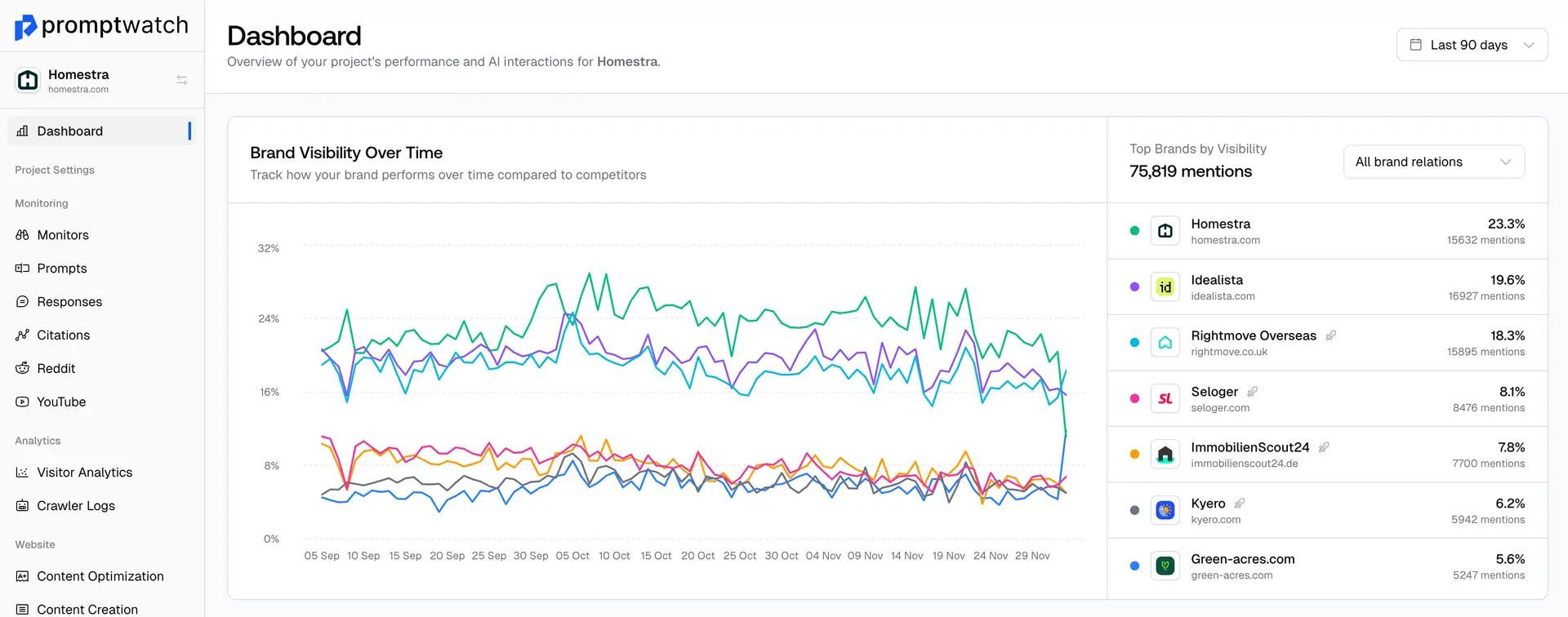As search behavior shifts from traditional engines like Google to AI-driven interfaces such as ChatGPT, Claude, and Perplexity, a new field has emerged: Generative Engine Optimization (GEO).
If you've noticed your brand being mentioned in AI-generated responses or cited in LLM-powered tools—sometimes without clear attribution—you're seeing GEO in action. It's about shaping how these generative models synthesize information and present your brand within their answers.
What are generative engines?
Generative engines are AI systems powered by large language models (LLMs). Unlike traditional search engines that deliver a list of ranked links, generative engines synthesize information from multiple sources into natural language responses. Tools like ChatGPT, Perplexity, Bing Copilot, and You.com are leading this shift.
Instead of directing users to websites, generative engines summarize information. Sometimes they cite sources. Sometimes they don't. This presents both a challenge and an opportunity for visibility.
For example, a user asking Perplexity ‘What’s the best CRM for small businesses?’ may get HubSpot or Salesforce in the answer, but only one of them gets cited as a source, leaving the other with uncredited visibility.
Defining generative engine optimization
Generative Engine Optimization (GEO) is the process of improving your online presence so that your brand, content, or products are more likely to appear favorably within AI-generated responses.
It aims to influence the actual content of the answers that AI models generate by optimizing for:
- LLM training and retrieval behavior
- Relevance to specific prompts
- Citability and clarity of source content
- Brand presence across authoritative sources
- Technical markup and crawlability
The goal is not just to get ranked, but to be referenced, cited, or paraphrased accurately and positively by AI engines when users ask questions relevant to your domain.
What is GEO in SEO?
GEO in SEO refers to how generative engine optimization fits into the broader world of search engine optimization. While SEO traditionally focuses on improving visibility in search engines like Google and Bing, GEO extends those principles into AI-driven platforms such as ChatGPT, Claude, Perplexity, and Bing Copilot.
In practice, GEO doesn’t replace SEO; it builds on it. The same fundamentals of keyword relevance, content quality, and authority still matter, but GEO shifts the focus toward how AI models interpret, cite, and synthesize your content in their responses.
For example, if you publish a guide on “best CRM tools for small businesses,” SEO helps it rank on Google, where users can click through to your site. Those same optimizations: clear structure, authoritative sources, and relevant keywords, also increase the chances that generative engines like ChatGPT or Perplexity will reference your content when answering that question.
How GEO Differs from SEO and AEO
While GEO is closely connected to SEO, it’s not identical. To fully understand where it fits, it helps to compare it alongside both SEO and AEO (Answer Engine Optimization). Each discipline shares common ground but targets a different type of platform, with unique goals, strategies, and outcomes.
The table below highlights the key differences.
| Aspect | SEO (Search engines) | AEO (Answer engines) | GEO (Generative engines) |
|---|---|---|---|
| Platform | Search engines (e.g., Google) | Answer engines (e.g., featured snippets, voice search) | Generative engines (e.g., ChatGPT, Perplexity) |
| Goal | Higher rankings | Structured visibility | Inclusion in generated content |
| Strategy | Keywords, backlinks, and on-page optimization | Q&A format, schema markup | Informational authority, prompt optimization, source presence |
| Outcome | Website click-through | Quick visibility in snippets | Brand referenced, cited, or paraphrased |
Why GEO matters now
Generative engines are becoming the first point of contact for information, especially among younger audiences and professionals using AI tools in daily workflows.
Key trends making GEO urgent:
- ChatGPT receives over 1.5 billion visits per month
- Perplexity is growing rapidly as a search alternative
- AI features are being integrated directly into Google and Bing
- AI responses sometimes synthesize information without direct citation, making brand presence within the answer crucial.
In short, if your brand isn't optimized for these platforms, you're invisible to a growing segment of online users.
3 top GEO tools to monitor and optimize your AI search visibility
Understanding the theory behind GEO is one thing; putting it into practice is another. To effectively track, measure, and improve how your brand shows up in generative engines, you’ll need the right tools.
Below are our top three recommendations:
1. Promptwatch
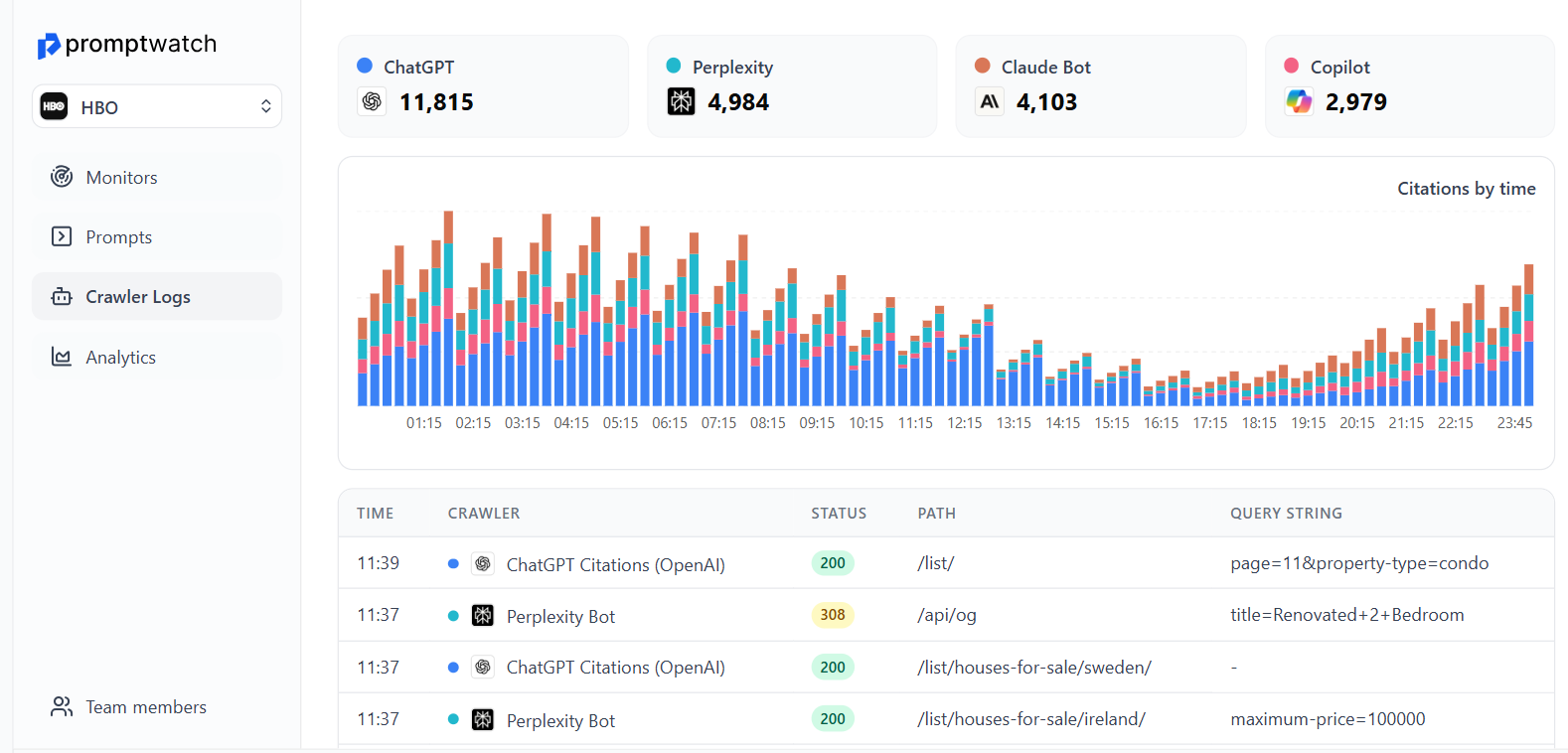
Promptwatch is a leading GEO platform that enhances brand visibility across AI-driven search engines like ChatGPT, Claude, Gemini, and Perplexity. Our platform enables businesses to monitor their presence in AI-generated responses, track brand mentions, and analyze AI-driven traffic to optimize content for better visibility.
Key features
- Real-time brand monitoring: Tracks brand mentions across major AI platforms, providing up-to-date insights into visibility.
- Citation tracking: Monitors which pages are cited in AI-generated responses, helping identify authoritative content.
- AI traffic attribution: Associates AI-driven traffic with specific pages, aiding in performance analysis.
- Prompt testing: Allows users to run prompts across different AI models to evaluate and improve content relevance.
- Content gap analysis: Identifies topics or questions where the brand is underrepresented, highlighting opportunities for optimization.
- Visibility monitoring: Continuously monitor your visibility trends and user behavior within AI-generated content.
Pricing
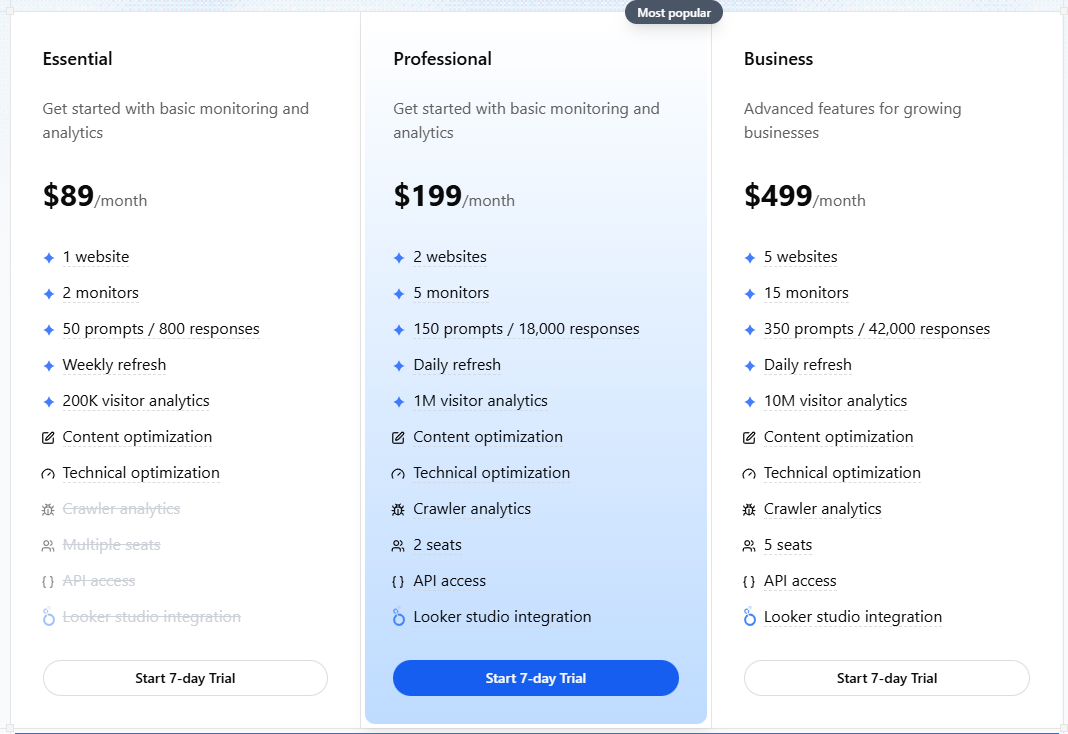
We provide subscription pricing options to suit different monitoring requirements and business sizes:
- Essential - $89/month: 1 site, 2 monitors, 50 prompts, weekly updates, ~200K analytics.
- Professional - $199/month: Additional monitors, ~150 prompts, daily updates, enhanced analytics, more seats.
- Business - $499/month: More sites, ~350 prompts, daily updates, additional seats.
- Custom (Enterprise): Pricing tailored to specific needs, advanced features, enterprise-level support, and security.
A 7-day free trial is available, allowing you to evaluate our platform before committing to a plan.
2. Geneo
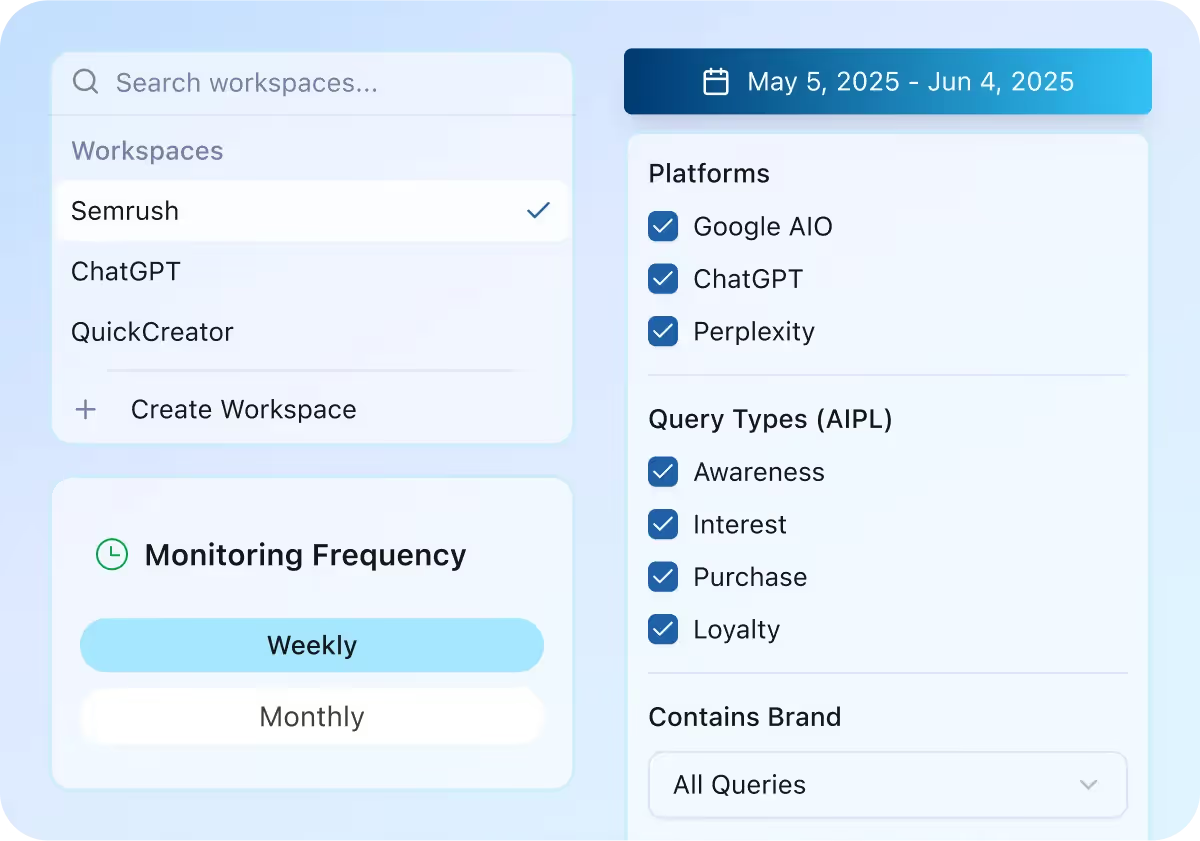
Geneo is a GEO platform designed to enhance brand visibility across AI search engines like ChatGPT, Perplexity, and Google AI Overview. It provides real-time monitoring, competitor analysis, and content optimization insights to help businesses improve their presence in AI-generated responses.
Key features
- Real-Time monitoring: Tracks brand mentions and visibility across multiple AI platforms, providing up-to-date insights into your brand's presence.
- Competitor analysis: Compares your brand's AI visibility against competitors, identifying strengths and areas for improvement.
- Content optimization insights: Offers recommendations for content adjustments to enhance AI-generated responses and improve brand representation.
- Performance metrics: Provides detailed analytics on brand mentions, sentiment, and visibility trends over time.
- Customizable dashboard: Allows users to tailor their dashboard to focus on specific metrics and insights relevant to their goals.
Pricing
Geneo offers the following plans:
- Free plan: 50 credits, monitor 1 brand, basic brand monitoring with AI platform detection.
- Pro plan - $39.9/month: 1,000 credits per month, monitor 1 brand, 3-day free trial included.
- Enterprise plan: Pay-as-you-go, buy credits as needed, monitor unlimited brands.
3. Goodie AI
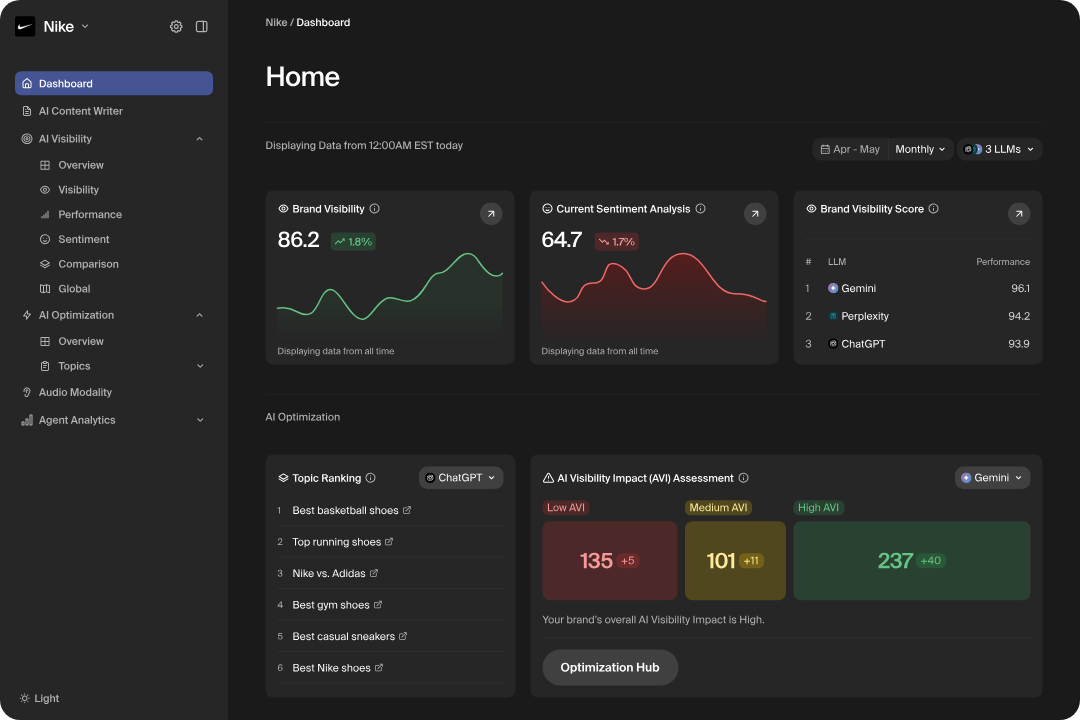
Goodie AI is a GEO platform that helps brands boost visibility across AI-driven search engines like ChatGPT, Perplexity, and Google Gemini. It monitors AI-generated responses, provides optimization insights, and connects AI-driven mentions to measurable business outcomes.
Key features
- AI visibility monitoring: Tracks and provides insights into where and how your brand appears in responses generated by various Large Language Models (LLMs).
- AI optimization hub: Recommends actionable changes to boost AI search visibility, including content restructuring and schema enhancements.
- AI content writer: Assists in creating content optimized for AI queries, ensuring relevance and clarity for AI algorithms.
- AI search analytics & attribution: Ties AI-driven traffic or mentions back to business metrics, allowing for performance measurement and ROI analysis.
- Competitor analysis: Provides insights into competitors' strategies, helping you stay ahead in AI search rankings.
Pricing
Goodie AI operates on a custom enterprise pricing model. To get exact pricing figures, you need to book a demo.
How to start with GEO
Here are a few practical steps to begin optimizing for generative engines:
- Create Authoritative, Well-Structured Content: Focus on directly answering key questions ("what," "how," "why") in your field using clear headings, lists, concise language, and a conversational tone. Structure content in formats like Q&A that AI favors.
- Embed Authority & E-E-A-T: Support claims with data, statistics, and references. Ensure brand mentions appear on high-authority platforms (like Wikipedia, industry publications). Demonstrating Experience, Expertise, Authoritativeness, and Trustworthiness (E-E-A-T) is vital, as these are key signals for AI.
- Maintain Consistent Branding: Use clear and consistent brand naming and messaging across your website and third-party platforms so AI can easily identify and connect information about you.
- Monitor Your Presence: Regularly test your visibility by running relevant prompts in generative engines and specialized tools like Promptwatch to see how your brand appears (or doesn't).
- Track & Analyze: Track AI citations and mentions where possible, understanding that direct attribution can be challenging. Use tools like Promptwatch for dedicated tracking of your brand's presence in AI responses.
GEO is the new front page
As generative engines evolve, they are becoming the new gatekeepers of information. Just as brands once optimized for the top spot on Google, the next wave of growth will come from being surfaced — not searched — by AI.
Promptwatch is built to help you track and optimize your presence across the generative web. As the rules of visibility shift, GEO is your competitive edge.




